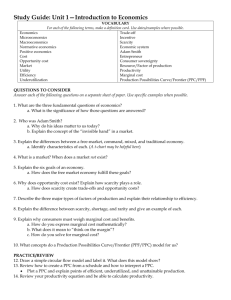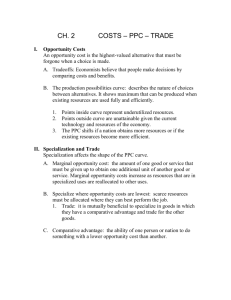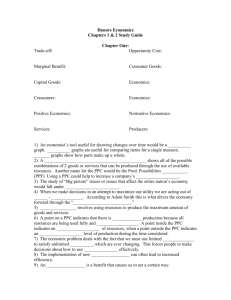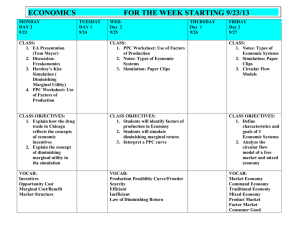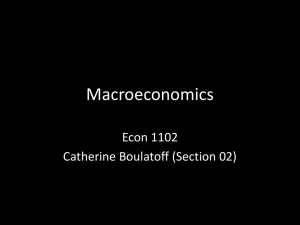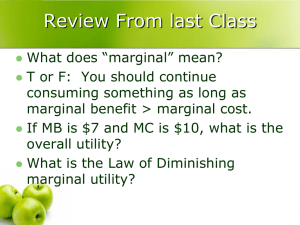Objectives Assessed on Unit 1 Test What is economics?
advertisement
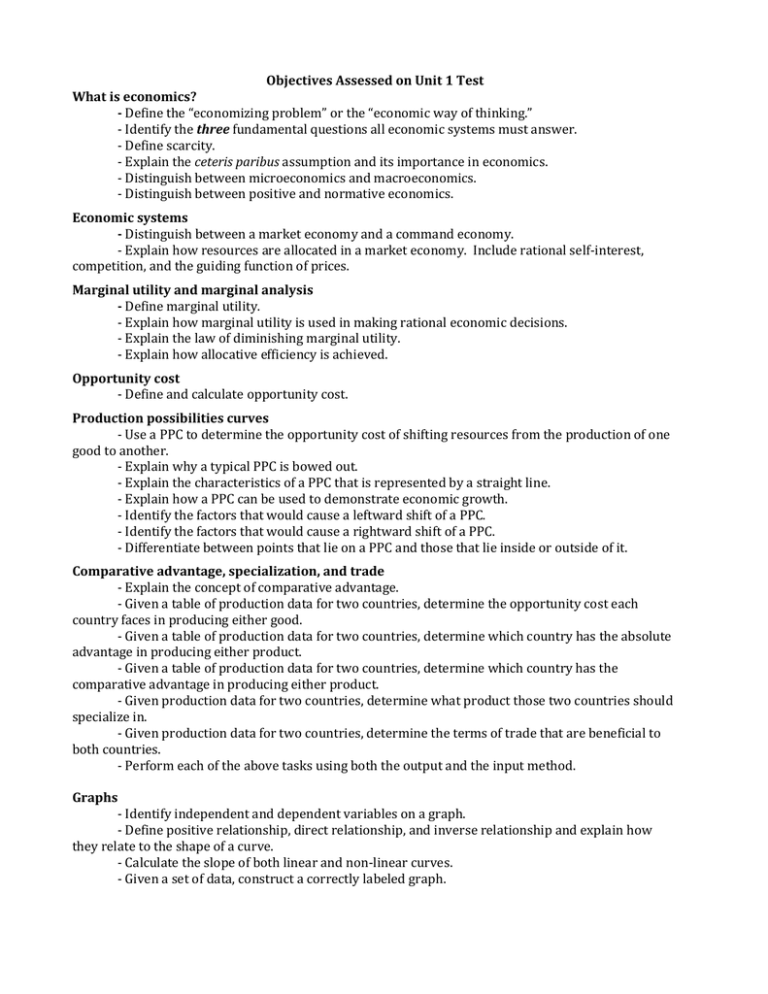
Objectives Assessed on Unit 1 Test What is economics? - Define the “economizing problem” or the “economic way of thinking.” - Identify the three fundamental questions all economic systems must answer. - Define scarcity. - Explain the ceteris paribus assumption and its importance in economics. - Distinguish between microeconomics and macroeconomics. - Distinguish between positive and normative economics. Economic systems - Distinguish between a market economy and a command economy. - Explain how resources are allocated in a market economy. Include rational self-interest, competition, and the guiding function of prices. Marginal utility and marginal analysis - Define marginal utility. - Explain how marginal utility is used in making rational economic decisions. - Explain the law of diminishing marginal utility. - Explain how allocative efficiency is achieved. Opportunity cost - Define and calculate opportunity cost. Production possibilities curves - Use a PPC to determine the opportunity cost of shifting resources from the production of one good to another. - Explain why a typical PPC is bowed out. - Explain the characteristics of a PPC that is represented by a straight line. - Explain how a PPC can be used to demonstrate economic growth. - Identify the factors that would cause a leftward shift of a PPC. - Identify the factors that would cause a rightward shift of a PPC. - Differentiate between points that lie on a PPC and those that lie inside or outside of it. Comparative advantage, specialization, and trade - Explain the concept of comparative advantage. - Given a table of production data for two countries, determine the opportunity cost each country faces in producing either good. - Given a table of production data for two countries, determine which country has the absolute advantage in producing either product. - Given a table of production data for two countries, determine which country has the comparative advantage in producing either product. - Given production data for two countries, determine what product those two countries should specialize in. - Given production data for two countries, determine the terms of trade that are beneficial to both countries. - Perform each of the above tasks using both the output and the input method. Graphs - Identify independent and dependent variables on a graph. - Define positive relationship, direct relationship, and inverse relationship and explain how they relate to the shape of a curve. - Calculate the slope of both linear and non-linear curves. - Given a set of data, construct a correctly labeled graph.

